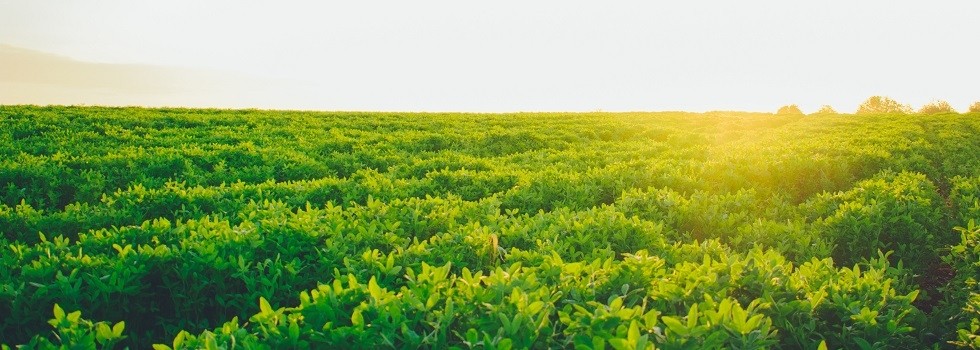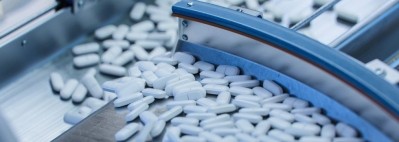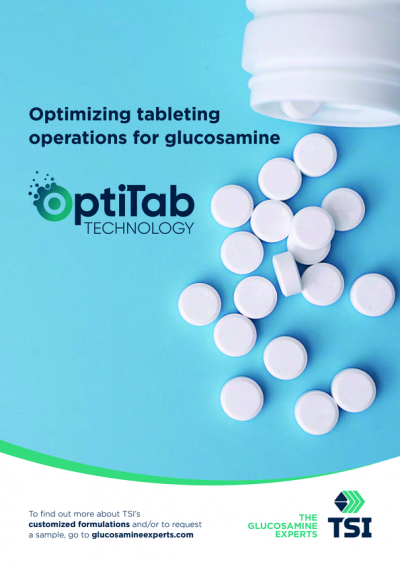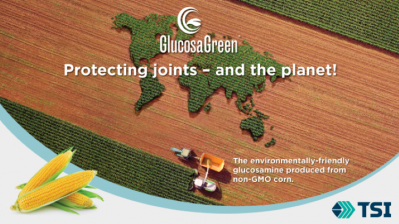Promotional Features
Earth Tones: GlucosaGreen Promotes Joint Wellness & Eco Health
As far back as 2008, seafood industry data analysts observed, “The current trend within the seafood industry is a focus on traceability and sustainability with consumers and retailers becoming more concerned about the over-exploitation of our oceans.” 1
Another interesting statistic is that the joint health market is expected to increase to more than $14 billion in four years (by 2024). 2
There is a connection – and a rather strong one – between these seemingly unrelated facts: glucosamine.
A 2009 market intelligence report focusing on Europeans’ attitudes towards sustainability unearthed significant concerns about how manufacturers and industry affected the environment while producing consumer goods. Ten years ago, the survey found that of more than 26,500 Europeans polled in 27 EU Member States and Croatia, slightly more than 8 in 10 individuals stated that a product’s impact on the environment is an important element in the decision to purchase products. Breaking that down, 49% said it was “rather important” while 34% deemed this attribute to be “very important.” 3
Fast-forward to 2017, when 27,881 EU citizens were polled again about their attitudes towards the environment. Number three on the “most important environmental issues” list was the growing amount of waste (40%). According to this report, more than 33% (a third) consider pollution of waters to be important. 4
Nationally, concerns about prioritizing the protection of the environment is rather high:
According to the report, 99% in Portugal, Sweden and Cyprus, 85% in Austria and 87% in Romania and Croatia. There is greater variation in the proportions that say environmental protection is “very important”. This is highest in Sweden and Cyprus (both 87%) and lowest in Croatia (40%), Poland (40%), Austria (41%) and Lithuania (42%). 4
Combine this with the burgeoning desire for plant-based/vegan products: according to veganbits.com, respondents in a survey noted the top reason for being vegan was for health (69%).
GlucosaGreen satisfies concerns for ecological wellness and for vegans interested in supporting or nourishing their joints to continue to enjoy an active and fitness-oriented lifestyle.
Taste, quality and disparity of plant-based foods have advanced significantly during the past several years. This sector has grown so rapidly that there is now a conference devoted to all consumables plant-based: the inaugural Plant-Based World Conference & Expo, held this June in New York City.
The European consumer base is ready for novel, clean plant-based alternatives to conventional dietary supplements typically derived from animal sources. For example, the multiple benefits of glucosamine, typically processed from shellfish, can now be obtained from corn.
Sustainably Sourced Glucosamine
Currently, nearly all the world’s glucosamine is produced from shellfish. The process of manufacturing glucosamine from shellfish, however, relies substantially on chemicals and energy, while also creating excessive amounts of toxic wastewater that is harmful to people, animals and the environment.
The process of obtaining glucosamine from shellfish is a bit arduous. The usable raw material from shellfish is chitin, and to obtain chitin, processors start with alkali leaching, then alkali cooking, acid leaching, oxidizing, deoxidizing and drying. To make one metric tonne (MT) of glucosamine HCL requires 2,000 kilograms (kg) of chitin, along with 5,000 kg of NaOH and 17,000 kg of 30% HCl. NaOH is sodium hydroxide, (also known as lye), used to make such products as commercial drain and oven cleaners, paper and aluminum; it is considered a hazardous substance in some nations throughout the world.
Producing 1 MT of traditional shellfish glucosamine requires 30 to 40 MTs of shellfish shells and creates 5 to 6 MTs of solid waste. Further, the process is responsible for creating up to 460 MT of wastewater with an unhealthy pH of 5.5.
Another inventive method of creating supplemental glucosamine is by using citric biomass from Aspergillus niger, a fungus whose shell is also abundant in chitin. The fungus-derived chitin has been the traditional alternative source of glucosamine for those individuals with shellfish allergies or who are strict vegans. Yet this process, too, is not a healthy one for the environment: it produces 215 MT of wastewater and 25 MT solid waste.
Could there be a sustainable, easily grown commodity plant that can yield material for glucosamine?
Yes. Corn.
GlucosaGreen – An A-Maize-ing Ingredient
TSI has created a patent-protected process that uses a novel fermentation technology on non-GMO corn to produce a glucosamine ingredient that is bioequivalent to shellfish glucosamine. This process is much more supportive of the well-being of the environment. GlucosaGreen® is a sustainable commercially available glucosamine produced from corn.
GlucosaGreen’s starting material is glucose, which is obtained from non-GMO corn. From here, the fermentation process uses a patented micro-organism as a processing aid. The technology efficiently transforms glucose into glucosamine.
GlucosaGreen® produces only 2% of the waste compared to shellfish glucosamine. It takes only 2 MTs of clean water to produce the same amount of glucosamine – 99.9 per cent less water than required for shellfish-derived glucosamine.
GlucosaGreen has been validated to be bioequivalent to all other forms of approved glucosamine, thus it has the same favourable safety and tolerability profile as other dietary glucosamine.
This glucosamine also has several more attributes that today’s discerning consumers will find favourable. It is a non-GMO-certified product, GRAS affirmed, is allergen- and shellfish-free, and no animal products are used in the entire fermentation and manufacturing processes. GlucosaGreen is a clean-label-friendly glucosamine. It made sustainably and is therefore not dependent on a fragmented supply of crustacean shells or a limited quantity of citric acid biomass waste stream.
Consumers are proactively demanding and using environmentally sustainable and friendly products. As more consumers become aware of how the conventional shellfish glucosamine industry impacts the environment – and the shellfish populations themselves – they will embrace GlucosaGreen as their glucosamine of choice.
GlucosaGreen is available for manufacture in a variety of forms: glucosamine sulfate, glucosamine hydrochloride, and N-acetyl-d glucosamine as well as in several formats including powders with a variety of particle sizes and exclusive DC granules used to make premium tablets via direct compression.
With GlucosaGreen being derived from a readily available vegetable source, and manufactured via environmentally friendly methods, consumers and brand partners can be reassured of a stable, high-quality supply of glucosamine. GlucosaGreen will help partner brands distinguish their products in a crowded joint health market.
A Com-pressing Challenge
European consumers still primarily consume glucosamine in tablets. But conventional glucosamine is quite challenging to transform into tablets. Because glucosamine in powder form doesn’t compress it must be in the form of direct compression (DC)-grade granules to process effectively into tablets.
Conventional glucosamine suppliers are proficient in raw material supply but they tend not to be experts in tablet manufacturing.
This disjointed relationship between brand marketers and conventional glucosamine suppliers has led to the current industry practice where DC granules are measured by particle size distribution (PSD). However, PSD does not fully reflect suitable compressibility for tableting. PSD alone creates a variability that can have significant impact on operational efficiencies and outcomes, therefore the granules must exhibit high compressibility.
The key to making an excellent mobility-support tablet with glucosamine is using a granule with the desired compressibility – not just a specified PSD. Utilising DC granules enables production of smaller glucosamine tablets with better hardness, uniformity and disintegration time, and without chipping and capping, as well as reduces excipients, improves tablet aesthetics, improves operational efficiency and reduces overall costs.
Glucosamine that supports the environment, is suitable for everyone and that can be compressed into tablets (the preferred form) in a manner that is most expedient and cost-effective can move your brand swiftly ahead in the mobility-support marketplace.
REFERENCES1 [“Shellfish Industry Development Strategy A Case for Considering MSC Certification for Shellfish Cultivation Operations” April 2008 – www.shellfish.org]2 “Aging Population and Increasing Incidence of Osteoporosis Drives the Global Bone and Joint Health Supplements Market” Sept. 2017 (Global Industry Analysts, Inc.; www.strategry.com) -- https://www.strategyr.com/blog/blog-post.asp?bcode=MCP-67143 Flash Eurobarometer “Europeans’ attitudes towards the issue of sustainable consumption and production” (Flash No 256, 2009)4 Special Eurobarometer 468 Summary Attitudes of European citizens towards the environment October 2017






